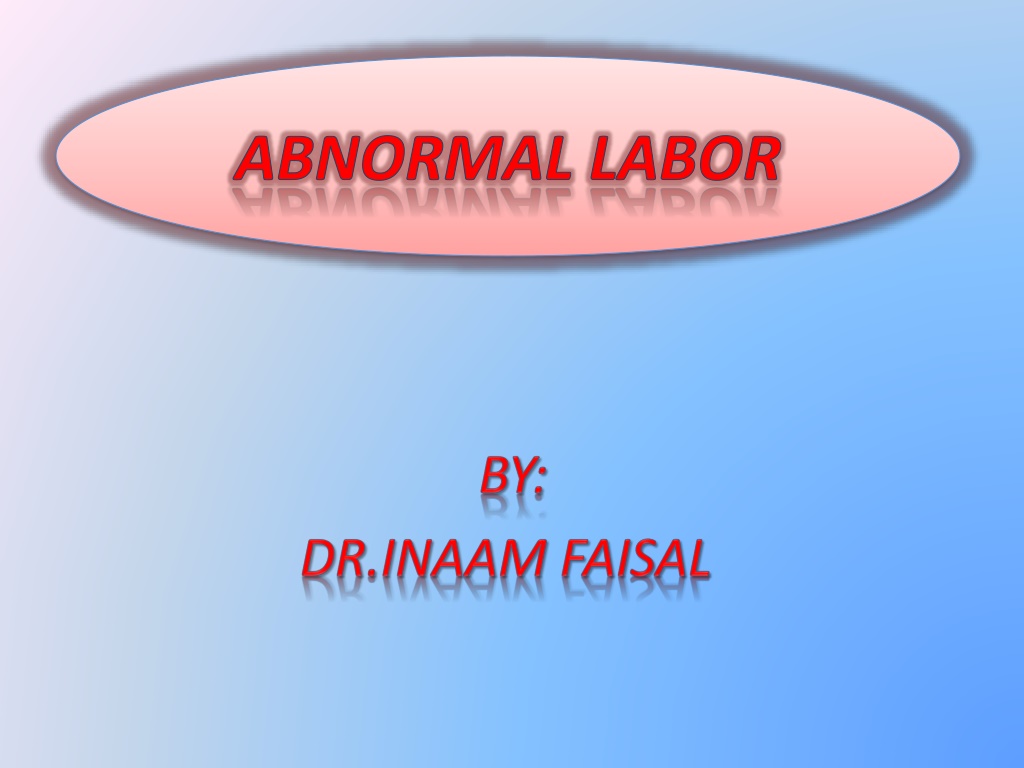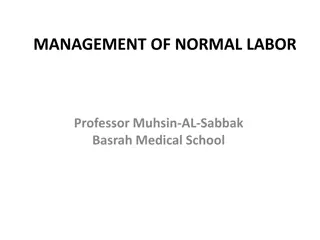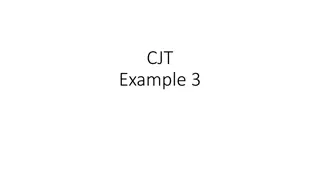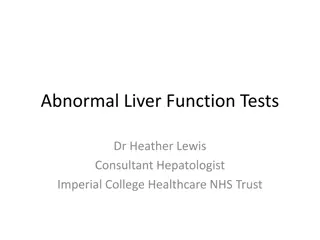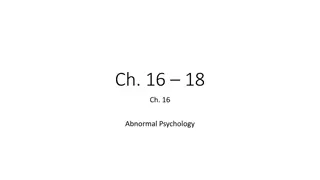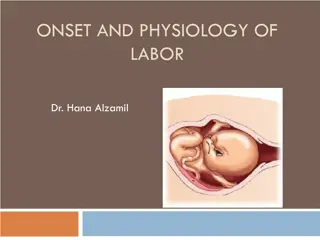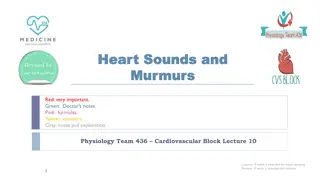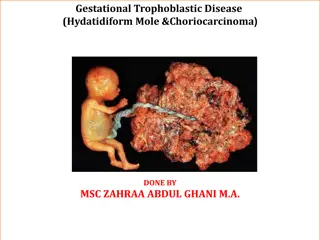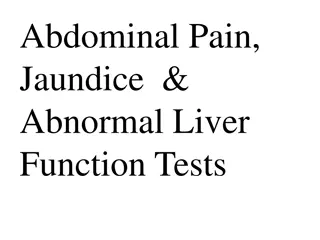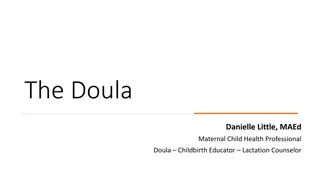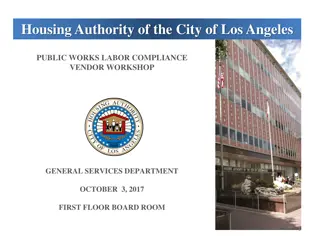Understanding Abnormal Labor and Prolonged Labor in Childbirth
Labor is considered abnormal when there is poor progress or signs of compromise in the fetus. Prolonged labor, lasting more than 18 hours, may result from various factors affecting cervical dilatation and descent of the presenting part. Causes include issues with power, passage, and passenger. Diagnosis involves thorough examination and the use of a partogram for monitoring. Learn more about the challenges and management of abnormal and prolonged labor in childbirth.
Download Presentation

Please find below an Image/Link to download the presentation.
The content on the website is provided AS IS for your information and personal use only. It may not be sold, licensed, or shared on other websites without obtaining consent from the author. Download presentation by click this link. If you encounter any issues during the download, it is possible that the publisher has removed the file from their server.
E N D
Presentation Transcript
Abnormal labour Definition Labor is said to be abnormal when there is poor progress (as evidenced by a delay in cervical dilatation or descent) and /or the fetus shows signs of compromise.
Prolonged labour: The labor is said to be prolonged when the combined duration of the first and second stage is more than the arbitrary time limit of 18 hours. The prolongation may be due to protracted cervical dilatation in the first stage and/or inadequate descent of the presenting part during the first or second stage of labor. Labor is considered prolonged when the cervical dilatation rate is less than 1 cm/h and descent of the presenting part is less than 1 cm/h for a period of minimum 4 hours.
CAUSES OF PROLONGED LABOR: Any one or combination of the factors in labor could be responsible. First stage: Failure to dilate the cervix is due to: Fault in power: Abnormal uterine contraction such as uterine (common) or incoordinate uterine contraction Fault in the passage: Contracted pelvis, cervical dystocia, pelvic tumor or even full bladder Fault in the passenger: Malposition (OP) and malpresentation (face, brow), congenital anomalies of the fetus (hydrocephalus). Others: Injudicious (early) administration of sedatives and analgesics before the active labor begins.
Second stage:Sluggish or non-descent of the presenting part in the second stage is due to: Fault in the power: (1) Uterine inertia, (2) Inability to bear down, (3) Regional (epidural) analgesia, (4) Constriction ring. Fault in the passage: (1) Cephalopelvic disproportion, android pelvis, contracted pelvis, (2) Undue resistance of the pelvic floor or perineum due to spasm or old scarring, (3) Soft tissue pelvic tumor. Fault in the passenger: (1) Malposition (occipitoposterior), (2) Malpresentation, (3) Big baby (4) Congenital malformation of the baby.
DIAGNOSIS: Prolonged labor is not a diagnosis but it is the manifestation of an abnormality, the cause of which should be detected by a thorough abdominal and vaginal examination. Diagnosis is usually done by partogram
The partogram The introduction of a graphic record of labour in the form of a partogram has been an important development. This record allows an instant visual assessment of the rate of cervical dilatation and comparison with an expected norm, according to the parity of the woman, so that slow progress can be recognized early and appropriate actions taken to correct it where possible. Other key observations are entered on to the chart, including the frequency and strength of contractions, the descent of the head in fi fths palpable, the amount and colour of the amniotic fl uid draining, and basic observations of maternal well-being, such as blood pressure, pulse rate and temperature.
A line can be drawn on the partogram at the end of the latent phase demonstrating progress of 1 cm dilatation per hour. Another line ( the action line ) can be drawn parallel and 4 hours to the right of it. If the plot of actual cervical dilatation reaches the action line, indicating slow progress, then consideration should be given to a number of different measures which aim to improve progress. Progress can also be considered slow if the cervix dilates at less than 1 cm every 2 hours.
First stage: First stage of labor is considered prolonged when the duration is more than 12 hours. The rate of cervical dilatation is <1 cm/h in a primi and <1.5 cm/h in a multi. The rate of descent of the presenting part is <1 cm/h in a primi and <2 cm/h in a multi.
PROLONGED LATENT PHASE Latent phase is the preparatory phase of the uterus and the cervix before the actual onset of labor. Mean duration of latent phase is about 8 hours in a primi and 4 hours in a multi.(3-8 hours). A latent phase that exceeds 20 hours in primigravidae or 14 hours in multiparae is abnormal. The causes include: (1) unripe cervix, (2) malposition and malpresentation, (3) cephalopelvic disproportion, (4) premature rupture of the membranes, (5) induction of labor and (6) early onset of regional anesthetic. Prolonged latent phase may be worrisome to the patient but does not endanger the mother or fetus. Management: Expectant management is usually done unless there is any indication (for the fetus or the mother) for expediting the delivery. Rest and analgesic are usually given. When augmentation is decided, medical methods (oxytocin or prostaglandins) are preferred. Amniotomy is usually avoided. Prolonged latent phase is not an indication for cesarean delivery.
Disorders of the active phase: Active phase disorders may be divided into: (A) protraction and (B) arrest disorders. (A) Protracted active phase: When the rate of cervical dilatation is <1.2 cm/h in a primipara and <1.5 cm/h in a multipara. A protracted active phase may be due to: (i) inadequate uterine contractions, (ii) cephalopelvic disproportion, (iii) malposition (OP) or malpresentation (brow) or (iv) regional (epidural) anesthesia.
(B) Arrest disorder: Arrest of dilatation is defined when no cervical dilatation occurs after 2 hours in the active phase of labor. It is commonly due to inefficient uterine contractions. No descent for a period of more than 2 hour is called arrest of descent. It is commonly due to CPD
Second stage: Mean duration of second stage is 50 minutes for nullipara and 20 minutes in multipara. Prolonged second stage is diagnosed if the duration exceeds 2 hours in nullipara and 1 hour in a multipara when no regional anesthesia is used. One hour or more is permitted in both the groups when regional anesthesia is used during labor (ACOG).
Disorders of the second stage: (i) Protraction of descent is defined when the descent of the presenting part (station) is at less than 1 cm/h in a nullipara or less than 2 cm/h in a multipara. (ii) Arrest of descent is diagnosed when no progress in descent (no change in station) is observed over a period of at least 2 hours. It may be due to one or a combination of several underlying abnormalities like CPD, malposition (OP), malpresentation, inadequate uterine contradictions or asynclitism. DANGERS: Fetal: The fetal risk is increased due to the combined effects of: (1) Hypoxia due to diminished uteroplacental circulation, especially after rupture of the membranes, (2) Intrauterine infection, (3) Intracranial stress or hemorrhage following prolonged stay in the perineum and/or supermoulding of the head, (4) Increased operative delivery. Prolonged second stage of labor is often associated with variable and delayed decelerations . Scalp blood pH estimations show fetal acidosis. All these result in increased perinatal morbidity and mortality
Maternal: There is increased incidence of: (1) distress (2)chorioamnionitis, (3) Postpartum hemorrhage, (4) trauma to the genital tract concealed (undue stretching of the perineal muscles which may be the cause of prolapse at a later period) or revealed such as cervical tear, rupture uterus, (5) increased operative delivery (vaginal instrumental or difficult cesarean), (6) puerperal sepsis, (7) subinvolution. The sum effects of all these lead to increased maternal morbidity and also increased maternal deaths.
TREATMENT PREVENTION Antenatal or early intranatal detection of the factors likely to produce prolonged labor (big baby, small women, malpresentation or position). Use of partograph helps early detection. Selective and judicious augmentation of labor by low rupture of the membranes followed by oxytocin drip. Change of posture in labor other than supine to increase uterine contractions, emotional support, avoidance of dehydration in labor and use of adequate analgesia for pain relief.
ACTUAL TREATMENT: Careful evaluation is to be done to find out: (1) cause of prolonged labor (2) effect on the mother, (3) effect on the fetus. In a nulliparous patient, inadequate uterine activity is the most common cause of primary dysfunctional labor. Whereas in a multiparous patient, cephalopelvic disproportion (due to malposition) is the most common cause Preliminaries: In an equipped labor ward, prolonged labor is unlikely to occur in modern obstetric practice. But cases of neglected prolonged labor with evidences of dehydration and ketoacidosis are admitted not infrequently to the referral hospitals in the developing countries. Correction of ketoacidosis should be made urgently by rapid intravenous infusion of Ringer s solution
Definitive treatment: First stage delay: Vaginal examination is done to verify the fetal presentation, position and station. Clinical pelvimetry is done. If only uterine activity is suboptimal, (1) amniotomy and/or oxytocin infusion is adequate, (2) effective pain relief is given by intramuscular pethidine or by regional (epidural) analgesia. For the management of secondary arrest, especially in multipara one should be very careful to use oxytocin, (3) cesarean section is done when vaginal delivery is unsafe (malpresentation, malposition, big baby or CPD).
Second stage delayShort period of expectant management is reasonable provided the FHR (electronic monitoring) is reassuring and vaginal delivery is imminent. Otherwise appropriate assisted delivery, vaginal (forceps, ventouse) or abdominal (cesarean) should be done. Difficult instrumental delivery should be avoided.
